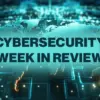As the digital landscape continues to evolve at breakneck speed, organizations worldwide are bracing for a new wave of security challenges in 2025.
The convergence of artificial intelligence, geopolitical tensions, and quantum computing is reshaping the threat environment, demanding a fresh approach to risk management and cyber defense.
This analysis explores the most significant emerging risks and the strategies enterprises must adopt to remain resilient to mounting cyber threats.
The Rise of AI-Driven Threats
Artificial intelligence has rapidly become a double-edged sword in cybersecurity. On one hand, AI-powered tools are helping organizations detect anomalies, automate responses, and predict attacks with greater accuracy.
On the other hand, cybercriminals are weaponizing AI to launch more sophisticated and scalable attacks.
In 2025, enterprises are witnessing a surge in AI-driven social engineering campaigns. Deepfakes and voice cloning are used to impersonate executives, trick employees, and bypass traditional verification methods.
Automated malware, created and adapted by generative AI, can evade signature-based defenses and mutate rapidly, making detection and response more challenging than ever.
Organizations are responding by investing in adversarial AI training, deploying behavioral analytics, and implementing multi-factor authentication, including biometric and contextual checks.
However, the arms race between attackers and defenders is intensifying, and staying ahead will require continuous innovation and vigilance.
Quantum Computing: The Next Frontier of Risk
While quantum computing promises revolutionary advances in medicine and logistics, it poses a looming threat to encryption standards.
Experts warn that quantum computers could soon have the power to break widely used cryptographic algorithms, exposing sensitive data to interception and decryption.
In anticipation of this risk, organizations are transitioning to post-quantum cryptography, adopting algorithms designed to withstand quantum attacks.
However, the migration is complex and time-consuming, particularly for industries with legacy systems and vast data stores.
The specter of “harvest now, decrypt later” attacks, where adversaries steal encrypted data now, intending to decrypt it once quantum capabilities mature, adds urgency to the need for quantum-safe security measures.
Geopolitical Tensions and Supply Chain Attacks
Geopolitical instability is increasingly spilling into cyberspace, with nation-state actors targeting critical infrastructure, supply chains, and intellectual property.
In 2025, cyberattacks are being used as tools of economic sabotage and political coercion, often blurring the lines between criminal and state-sponsored activity.
Supply chain vulnerabilities remain a top concern. Attackers exploit weak links in vendor networks and third-party software to access otherwise well-defended organizations.
The complexity of modern supply chains, combined with the proliferation of cloud services and IoT devices, has dramatically expanded the attack surface.
Organizations are adopting zero-trust architectures, segmenting networks, and enforcing strict access controls for partners and vendors to counter these threats.
Continuous monitoring and real-time threat intelligence sharing are becoming standard practices, as is the need for transparent and enforceable security standards across supply chains.
Ransomware Evolution and the Human Factor
Ransomware attacks continue to evolve, with criminals adopting new tactics such as double extortion, in which data is encrypted and threatened with public release.
The rise of Ransomware-as-a-Service (RaaS) platforms has lowered the barrier to entry for attackers, leading to a proliferation of incidents targeting organizations of all sizes.
Despite technological advancements, the human factor remains a critical vulnerability. Phishing, credential theft, and social engineering remain effective methods for initial compromise.
In 2025, security awareness training, regular phishing simulations, and a culture of security mindfulness are essential components of any defense strategy.
Regulatory Pressure and Compliance Complexity
The regulatory landscape is growing more complex, with new data protection laws and cybersecurity requirements emerging across regions and industries.
Organizations must navigate a patchwork of rules governing data privacy, breach notification, and critical infrastructure protection. Compliance is no longer just a checkbox exercise but a core element of risk management.
Enterprises invest in compliance automation, robust audit trails, and proactive engagement with regulators. The challenge is to balance regulatory obligations with operational agility and innovation.
Building a Resilient Future
The security trends shaping 2025 demand a shift from reactive defenses to proactive, adaptive strategies. Organizations must:
- Embrace zero-trust principles and micro-segmentation to limit lateral movement.
- Invest in AI-powered detection and response, while preparing for adversarial AI threats.
- Begin the transition to quantum-resistant cryptography.
- Harden supply chains through rigorous vendor risk management.
- Foster a culture of security awareness and continuous learning.
As cyber threats become more sophisticated, resilience becomes the defining characteristic of successful organizations.
By anticipating emerging risks and adapting swiftly, enterprises can safeguard their assets, reputations, and futures in an increasingly uncertain digital world.
Find this News Interesting! Follow us on Google News, LinkedIn, & X to Get Instant Updates!




.png
)
